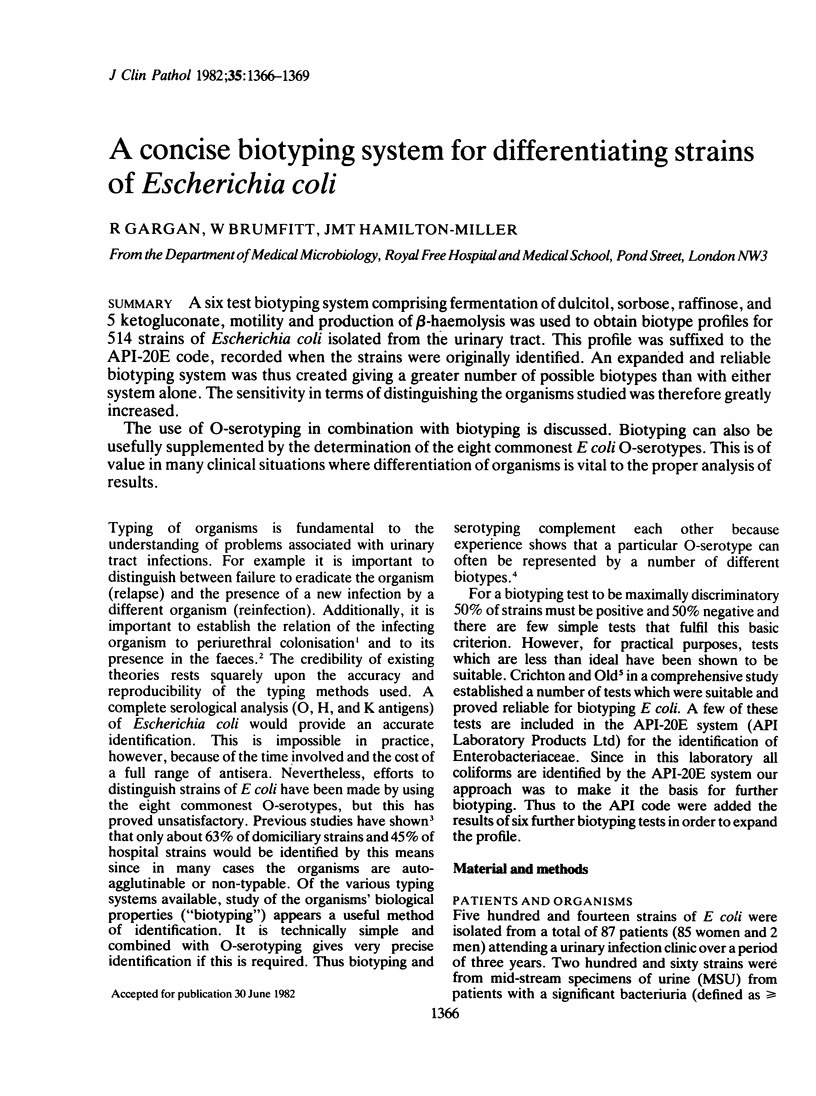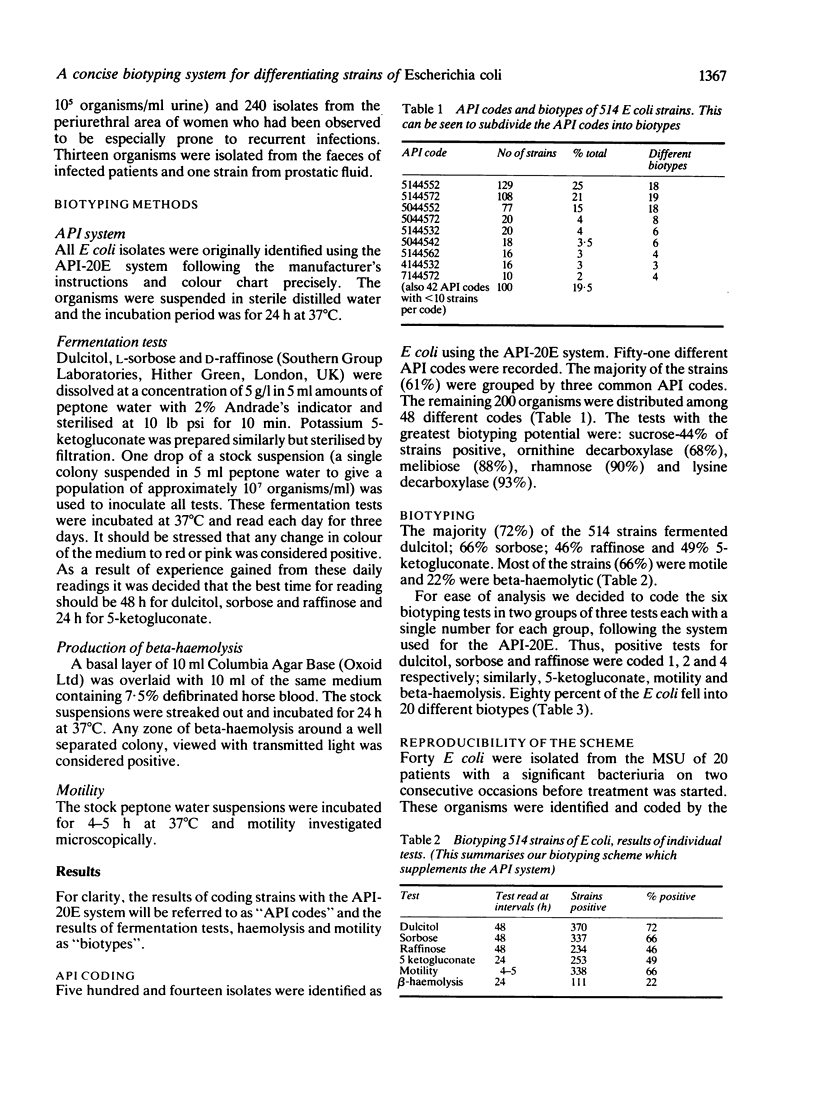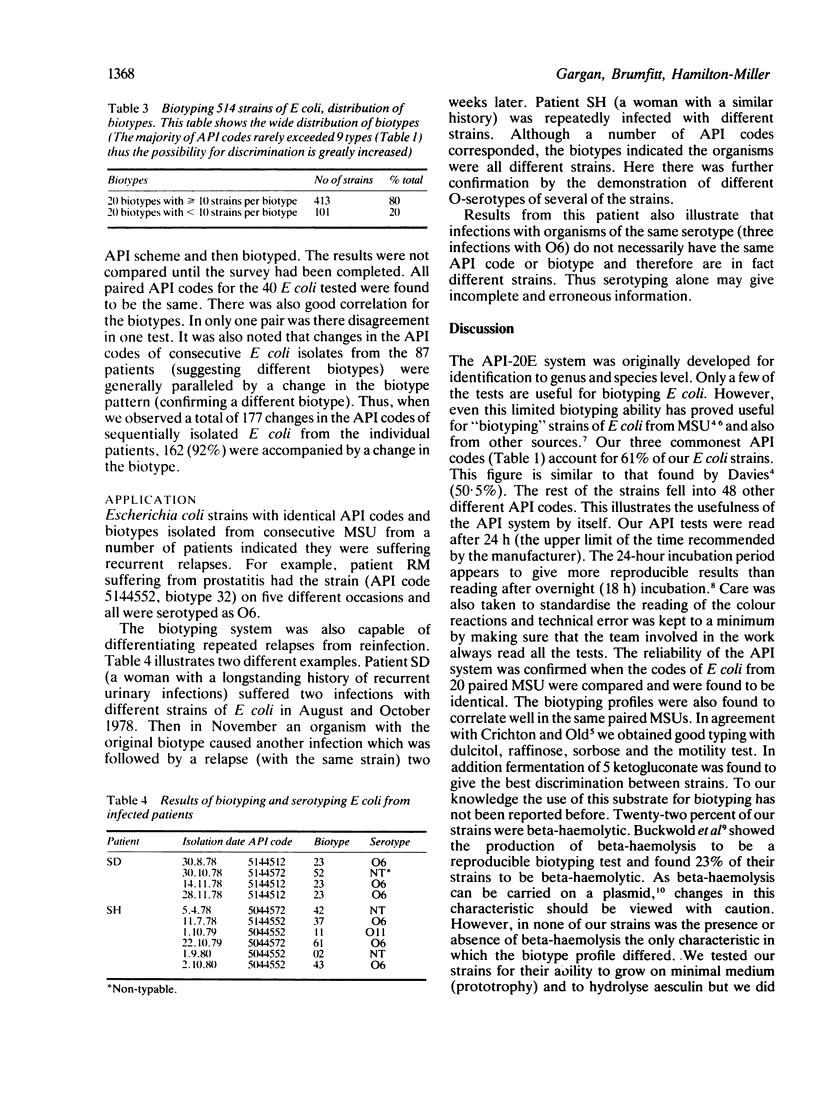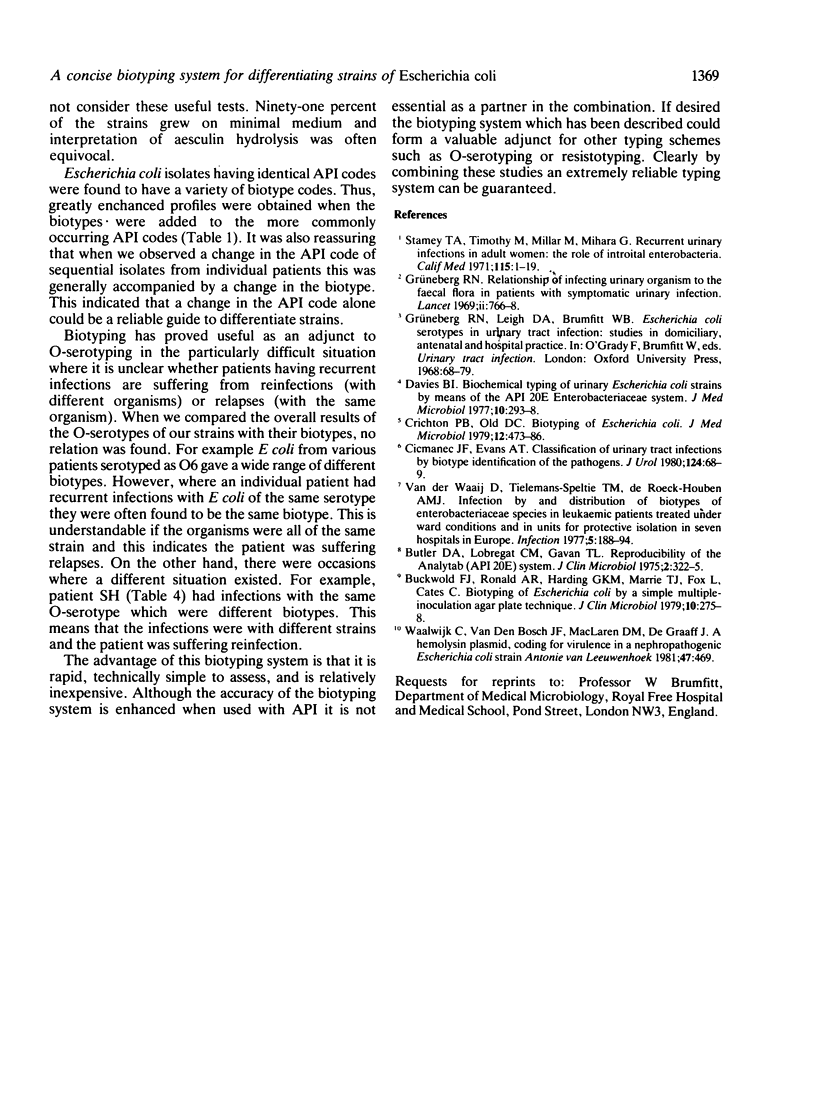Abstract
A six test biotyping system comprising fermentation of dulcitol, sorbose, raffinose, and 5 ketogluconate, motility and production of beta-haemolysis was used to obtain biotype profiles for 514 strains of Escherichia coli isolated from the urinary tract. This profile was suffixed to the API-20E code, recorded when the strains were originally identified. An expanded and reliable biotyping system was thus created giving a greater number of possible biotypes than with either system alone. The sensitivity in terms of distinguishing the organisms studied was therefore greatly increased. The use of O-serotyping in combination with biotyping is discussed. Biotyping can also be usefully supplemented by the determination of the eight commonest E coli O-serotypes. This is of value in many clinical situations where differentiation of organisms is vital to the proper analysis of results.
Full text
PDF



Selected References
These references are in PubMed. This may not be the complete list of references from this article.
- Buckwold F. J., Ronald A. R., Harding G. K., Marrie T. J., Fox L., Cates C. Biotyping of Escherichia coli by a simple multiple-inoculation agar plate technique. J Clin Microbiol. 1979 Sep;10(3):275–278. doi: 10.1128/jcm.10.3.275-278.1979. [DOI] [PMC free article] [PubMed] [Google Scholar]
- Butler D. A., Lobregat C. M., Gavan T. L. Reproducibility of the analytab (API 20E) system. J Clin Microbiol. 1975 Oct;2(4):322–326. doi: 10.1128/jcm.2.4.322-326.1975. [DOI] [PMC free article] [PubMed] [Google Scholar]
- Crichton P. B., Old D. C. Biotyping of Escherichia coli. J Med Microbiol. 1979 Nov;12(4):473–486. doi: 10.1099/00222615-12-4-473. [DOI] [PubMed] [Google Scholar]
- Davies B. I. Biochemical typing of urinary Escherichia coli strains by means of the API 20 E enterobacteriaceae system. J Med Microbiol. 1977 Aug;10(3):293–298. doi: 10.1099/00222615-10-3-293. [DOI] [PubMed] [Google Scholar]
- Grüneberg R. N. Relationship of infecting urinary organism to the faecal flora in patients with symptomatic urinary infection. Lancet. 1969 Oct 11;2(7624):766–768. doi: 10.1016/s0140-6736(69)90478-4. [DOI] [PubMed] [Google Scholar]
- Stamey T. A., Timothy M., Millar M., Mihara G. Recurrent urinary infections in adult women. The role of introital enterobacteria. Calif Med. 1971 Jul;115(1):1–19. [PMC free article] [PubMed] [Google Scholar]
- Stamey T. A., Timothy M., Millar M., Mihara G. Recurrent urinary infections in adult women. The role of introital enterobacteria. Calif Med. 1971 Jul;115(1):1–19. [PMC free article] [PubMed] [Google Scholar]
- Van der Waaij D., Tielemans-Speltie T. M., De Roeck-Houben A. M. Infection by the distribution of biotypes of enterobacteriacease species in leukaemic patients treated under ward conditions and in units for protective isolation in seven hospitals in Europe. Infection. 1977;5(3):188–194. doi: 10.1007/BF01639756. [DOI] [PubMed] [Google Scholar]


